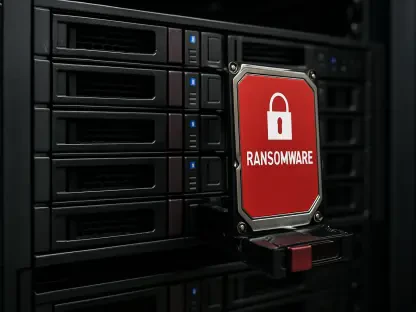In an era where digital infrastructure powers nearly every aspect of global business and communication, ensuring the security of the cloud native ecosystem has become a pressing priority for tech professionals across industries. A recently announced collaboration between the Cloud Native Computing Foundation (CNCF) and Docker marks a pivotal moment in addressing long-standing vulnerabilities in the software supply chain, particularly around container images. This partnership, though not yet a headline-grabber, targets critical pain points for developers, platform engineers, and Site Reliability Engineers (SREs) who depend on tools like Kubernetes and Prometheus to build and deploy scalable systems. By focusing on trust and authenticity in image distribution, the alliance aims to fortify the foundation of containerized environments, reducing risks that could cascade into widespread disruptions. As the reliance on cloud native technologies deepens, this initiative offers a timely response to the growing need for robust security measures in an interconnected world.
Enhancing Trust in the Software Supply Chain
Addressing Historical Challenges
The cloud native ecosystem has long grappled with fragility stemming from inconsistencies in container image distribution, especially through Docker Hub, the default repository for many open-source projects. Over time, challenges such as rate limits imposed on image pulls, ambiguous namespace structures, and the lack of verified provenance have introduced significant risks for users. These issues often left engineers uncertain about the authenticity and safety of the images they relied upon for critical infrastructure. The collaboration between CNCF and Docker directly confronts these historical shortcomings by integrating CNCF projects into Docker’s Sponsored Open Source Software (OSS) Program. This move establishes a clearer chain of custody for container images, ensuring that users can trust the sources they pull from. By formalizing the relationship, the partnership seeks to eliminate much of the uncertainty that has plagued the ecosystem, providing a more stable base for projects that underpin modern digital operations.
Beyond resolving past distribution hiccups, this joint effort also tackles the broader implications of unverified images in the supply chain. For years, the lack of standardized practices meant that even widely used CNCF projects could be scattered across unreliable or unofficial sources, heightening the risk of malicious tampering or accidental errors. Under the new framework, Docker Hub becomes a centralized hub for official CNCF project images, reducing the likelihood of pulling compromised or outdated versions. This shift not only streamlines access for developers and SREs but also mitigates the potential for vulnerabilities to spread through interconnected systems. While not a complete overhaul of the ecosystem, the initiative represents a significant step toward reinforcing trust in the tools that power cloud native environments, addressing concerns that have lingered for far too long among those tasked with maintaining secure and efficient workflows.
Standardizing Security Practices
One of the standout features of this collaboration is the introduction of official namespaces on Docker Hub, formatted as cncf/project:tag, which effectively eliminates ambiguity for users seeking authentic images. Previously, namespace confusion often led to mistakes, with engineers inadvertently pulling unofficial or outdated images that could harbor vulnerabilities. By clearly delineating official CNCF projects, the partnership ensures that users can confidently access verified content without second-guessing its legitimacy. This standardization is a game-changer for platform teams who manage sprawling containerized environments, as it reduces the time and effort spent on validating sources. The clarity brought by these namespaces fosters a more seamless integration of CNCF tools into production systems, bolstering the reliability of deployments across diverse industries.
Additionally, the collaboration embeds advanced security features as default practices for CNCF project images hosted on Docker Hub, further elevating the baseline of trust. Features such as vulnerability scanning, Software Bill of Materials (SBOM) generation, and image signing are now integral to the distribution process, providing multiple layers of protection against potential threats. Vulnerability scanning identifies weaknesses before they can be exploited, while SBOM generation offers transparency into an image’s components, aiding in compliance and risk assessment. Image signing, meanwhile, cryptographically verifies the authenticity of the content, ensuring it hasn’t been tampered with during transit. Together, these mechanisms create a fortified environment where security isn’t an afterthought but a built-in priority, empowering maintainers and users alike to operate with greater confidence in the integrity of their software supply chain.
Balancing Speed and Confidence in Development
Reducing Engineer Overhead
A key benefit of the CNCF-Docker partnership lies in its ability to alleviate the burden on engineers by minimizing doubts about container image authenticity, allowing them to prioritize service delivery over supply chain validation. In the fast-paced world of cloud native development, time is often a scarce resource, and the constant need to verify the legitimacy of base images can slow down critical workflows. This collaboration streamlines the process by ensuring that images pulled from Docker Hub under CNCF namespaces are official and trustworthy, effectively reducing the cognitive load on platform teams. As a result, developers can shift their focus to innovation and deployment, confident that the foundational components they rely on have been vetted through rigorous standards. This shift is particularly impactful for organizations managing large-scale systems, where even small delays in validation can compound into significant inefficiencies.
Moreover, the reduction in overhead extends beyond just image verification to the broader operational efficiency of engineering teams tasked with maintaining complex environments. Without the constant worry of pulling compromised or unofficial images, SREs and developers can allocate their efforts toward optimizing performance, scaling applications, and addressing user needs rather than troubleshooting supply chain issues. The partnership’s emphasis on trust translates into tangible time savings, enabling teams to meet tight deadlines without sacrificing security. For industries where uptime and reliability are non-negotiable, such as finance or healthcare, this newfound confidence in image sources can be a critical factor in maintaining seamless operations. By addressing a long-standing pain point, the initiative paves the way for smoother, more focused development cycles in the cloud native space.
Supporting Maintainers with Insights
Another significant advantage of this collaboration is the provision of detailed usage data to maintainers of CNCF projects, empowering them to make informed decisions about updates and security patches. Historically, maintainers often lacked visibility into how their images were being used in the wild, making it challenging to prioritize fixes or enhancements based on real-world needs. Through Docker Hub’s integration, maintainers now gain access to metrics that reveal download trends, user patterns, and potential areas of concern, allowing for a more proactive approach to project lifecycle management. This data-driven insight ensures that updates are aligned with actual usage, reducing the risk of neglecting critical vulnerabilities that could impact large user bases. Such transparency strengthens the ecosystem by fostering a closer connection between maintainers and the community.
Equally important is how these insights contribute to the long-term sustainability of CNCF projects, which form the backbone of countless cloud native deployments worldwide. Armed with usage statistics, maintainers can better anticipate demand spikes, plan resource allocation, and address security gaps before they escalate into major issues. This capability is particularly vital in an environment where threats evolve rapidly, and timely patches can mean the difference between a secure system and a costly breach. Furthermore, the feedback loop created by this data helps maintainers refine their projects to better serve diverse use cases, from small startups to sprawling enterprises. By equipping maintainers with actionable information, the partnership not only enhances security but also ensures that CNCF tools remain relevant and resilient in an ever-changing technological landscape.
Navigating Trade-Offs and Risks
Centralization Concerns
While the CNCF-Docker collaboration brings undeniable benefits, it also introduces notable risks, particularly around the centralization of image distribution through Docker Hub as a primary repository. Relying heavily on a single platform, even one as established as Docker Hub, creates a potential single point of failure that could have far-reaching consequences if disrupted by technical failures or targeted attacks. A successful breach or outage at this central hub could ripple through the cloud native ecosystem, impacting countless systems that depend on CNCF projects for their operations. This concern is amplified in an era where cyberattacks are increasingly sophisticated, targeting critical infrastructure to maximize disruption. The partnership, while efficient, must be viewed with an eye toward contingency planning to mitigate the fallout of such scenarios.
Additionally, the focus on Docker Hub raises questions about CNCF’s commitment to vendor neutrality, a principle that has long guided the foundation’s efforts to foster an open and inclusive ecosystem. By aligning closely with Docker, there’s a risk of marginalizing alternative registries such as GitHub Container Registry (GHCR) or Amazon Elastic Container Registry (ECR), which also host significant portions of container images. This could fragment the community, as users and organizations invested in other platforms might feel sidelined or pressured to conform to a Docker-centric model. Such dynamics could stifle competition and innovation in the registry space, potentially limiting the diversity of solutions available to cloud native practitioners. Balancing the benefits of streamlined distribution with the need for an open, multi-vendor ecosystem remains a critical challenge for CNCF moving forward.
Avoiding Complacency
Another risk tied to this collaboration is the possibility that stronger security defaults might lead to complacency among platform teams, reducing their diligence in maintaining independent security practices. With features like vulnerability scanning and image signing baked into the distribution process on Docker Hub, there’s a temptation to assume that these measures cover all bases, potentially causing teams to relax their own verification protocols. However, no system is entirely foolproof, and over-reliance on centralized safeguards could leave organizations vulnerable to gaps that fall outside the scope of these defaults. The importance of maintaining rigorous, in-house security checks cannot be overstated, as threats often exploit the smallest oversights in an otherwise fortified system.
To counter this danger, it’s essential for engineering teams to view the enhanced defaults as a complement to, rather than a replacement for, their existing security frameworks. Regular audits, custom validation processes, and continuous monitoring remain indispensable, even with the added protections offered through this partnership. The cloud native landscape is dynamic, with new vulnerabilities emerging constantly, and no single initiative can address every possible threat vector. By fostering a culture of proactive vigilance, organizations can ensure they’re not caught off guard by evolving risks, even as they benefit from the streamlined trust mechanisms introduced by CNCF and Docker. This balanced approach is crucial for sustaining long-term resilience in containerized environments.
A Maturing Cloud Native Ecosystem
Shift Toward Governance
The collaboration between CNCF and Docker stands as a clear indicator of the cloud native ecosystem’s transition from an era of rapid experimentation to one defined by resilience, governance, and institutional trust. In its early days, the field prioritized speed and scale, often at the expense of structured security practices, as developers raced to innovate and deploy at a breakneck pace. However, as cloud native technologies have become integral to global infrastructure, the need for robust oversight and standardized processes has grown undeniable. This partnership reflects that maturation, emphasizing the importance of trust in the software supply chain alongside the drive for innovation. It’s a pragmatic acknowledgment that sustainable progress requires balancing agility with accountability, ensuring systems can withstand the pressures of widespread adoption.
This shift also underscores a broader industry trend toward establishing frameworks that prioritize long-term stability over short-term gains, particularly for technologies underpinning critical services. By formalizing image distribution and embedding security as a core component, the initiative helps lay the groundwork for a more dependable ecosystem, where vulnerabilities are less likely to spiral into systemic failures. The focus on governance is especially relevant for industries like finance, healthcare, and government, where the stakes of outages or breaches are extraordinarily high. Although not a complete transformation, this step signals a commitment to evolving cloud native practices in a way that aligns with the demands of an increasingly interconnected and risk-prone digital landscape.
Ongoing Vigilance
Even as this partnership strengthens the foundation of the cloud native supply chain, it’s evident that it can’t eliminate all risks, necessitating continued diligence from platform teams across the board. The measures introduced, such as official namespaces and vulnerability scanning, address significant gaps, but they don’t account for every potential threat, such as direct attacks on Docker Hub or undetected flaws within CNCF projects themselves. Platform teams must remain proactive, enforcing their own policies and verification processes to safeguard against unforeseen vulnerabilities. This ongoing responsibility highlights that security in cloud native environments is a shared endeavor, requiring constant attention beyond any single initiative’s scope.
Looking ahead, the collaboration serves as a valuable tool rather than a definitive fix, prompting teams to integrate its benefits into broader security strategies without lowering their guard. The emphasis on sustained vigilance reminds practitioners that the dynamic nature of cyber threats demands adaptability, even with enhanced defaults in place. As a next step, organizations are encouraged to invest in regular training, updated protocols, and cross-team collaboration to stay ahead of emerging risks. This balanced perspective, combining partnership-driven improvements with independent oversight, offers a path forward for maintaining robust defenses in an ecosystem that continues to evolve at a rapid pace.









